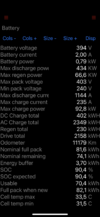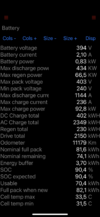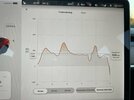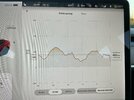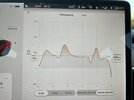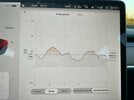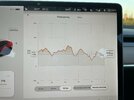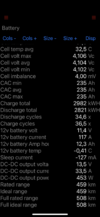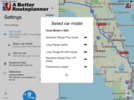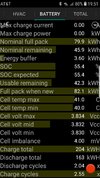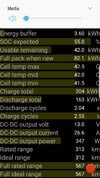Thanks. This shows:
70.4kWh / 458rkm / 0.955 = 161Wh/rkm. (259Wh/rmi)
(Or alternatively, (74.1kWh - (1-0.904)*3.7kWh) / 458rkm = 161Wh/rkm). (Can also rewrite as (Usable+SoC%*Buffer), (70.4kWh + 0.904*3.7kWh).)
And from the energy screen (as expected since those values are scaled by the quantity 80.6/81.6 (CapPack / NominalFullPack) for
@AAKEE since his energy exceeds the cap by that amount in these captures. - Quick crosscheck: 144Wh/km*506km * 81.6/80.6 = 73.77kWh = 74.1kWh - (1-0.904)*3.7kWh = 73.75kWh):
144Wh/km*506km / 458 rkm = 159Wh/rkm (It's probably slightly lower than this, maybe 158.5Wh/rkm). (Remember the energy screen only shows a portion of the buffer energy -> SoC%*Buffer, so this matches the form of the formula above.)
And this 159Wh/rkm is what the first calculation will converge to as
@AAKEE's battery degrades below 80.6kWh. It's the fundamental charging constant from 80.6kWh/508.5rkm. (158.5Wh/rkm, 255Wh/rmi). 508.5rkm = 316rmi and
@AAKEE has shown the car will display 316 rated miles max (rather than the 315 rated miles expected). So
at least 316rmi is the max, since 509rkm (at least 508.5rkm) also is displayed.
I'm using 80.6kWh here but that's probably between 80.55kWh and 80.65kWh and we can't be more precise.
Whether the scaling is CapPack/NominalFullPack, or CapPack/MaxNominalRemaining (higher than NominalFullPack for
@AAKEE) is also a bit ambiguous to me. But it also is close enough so it doesn't really matter.
It really is a beautiful way of hiding variable initial pack capacities amongst many vehicles. Nearly everyone starts at 508.5rkm, but not everyone has exactly the same energy.



